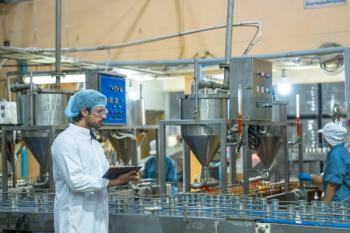Key Points
- A study published in Environmental Research introduced a novel “water quality fingerprint spectrum” (WQFS) using PCA, 2D-COS, MW–2D-COS, and PLS-SEM to analyze complex, multidimensional water pollution data from Lake Shahu, enabling spatial and temporal identification of key pollutants like CODCr, TN, and TP.
- The study found that water replenishment improved water quality by diluting pollutants, while tourism activities significantly worsened pollution levels by contributing to nutrient loading and organic waste.
- This new analytical framework not only identifies pollution hotspots but also offers scalable, data-driven tools for policymakers to prioritize interventions across various ecosystems beyond just lakes.
A recent study explored a new analytical framework that could help improve the interpretation of complex water quality data. This study, which was published in the journal Environmental Research, used principal component analysis (PCA), along with advanced tools such as two-dimensional correlation spectroscopy (2D-COS), moving window 2D-COS (MW–2D-COS), and partial least squares structural equation modeling (PLS-SEM), to build a “water quality fingerprint spectrum” (WQFS) to conduct a comprehensive and causal analysis of water pollution across time and space (1).
How does water pollution impact the environment and human health?
Water pollution is an ongoing problem worldwide, particularly in areas where proper sanitation methods are nonexistent. Contaminated water consumption can lead to gastrointestinal distress, such as diarrhea and vomiting, and parasites (2). Water pollution is also known to cause skin diseases and even cancer (2).
What did the study examine?
For their study, the researchers examined 792 samples from Lake Shahu, which is a large and ecologically significant body of water. The research team sought to solve a current issue in analyzing water pollution data, and that is common multivariate statistical methods falling short when attempting to process massive and multi-dimensional environmental data sets (1). These methods fall short because they cannot conduct a causal analysis of water quality fluctuations driven by both natural and anthropogenic factors (1).
This study sought to resolve these challenges and address these limitations. By developing a WQFS, which was made based on scores extracted from PCA, the researchers were able to combine it with spectroscopy to identify priority control parameters and isolate the periods and regions affected (1).
Through the fingerprint spectrum, the researchers identified chemical oxygen demand (CODCr), total nitrogen (TN), and total phosphorus (TP) as the dominant pollutants requiring urgent control in Lake Shahu (1). These parameters were shown to fluctuate significantly with human activity, particularly tourism and water replenishment programs.
What else did the study investigate?
The study also investigated how human and environmental variables contribute to pollution levels. Using causal analysis tools like PLS-SEM, the team quantified the effects of various drivers on water quality (1). Water replenishment activities, which introduce fresh water into the lake system, were shown to improve water quality with a total effect of −0.464 (1). This improvement was primarily because of the dilution of pollutants and suppression of algal growth.
However, the results of the study did show the negative effect that tourism-related activities had on the water pollution levels. With a total effect of 0.562, this finding suggests that unregulated tourism may be a major contributor to nutrient loading and organic waste in Lake Shahu, which is exacerbating eutrophication and harming aquatic ecosystems (1).
What are the significant contributions of this study?
One of the study’s most significant contributions is its ability to connect vast, multiscale environmental datasets with practical policy and management strategies. The WQFS-based workflow doesn’t just identify problems; it helps prioritize actions (1). Because the researchers demonstrated how their method can note where and when pollution spikes occur, it can provide them with the information necessary to advise environmental managers and policymakers on mitigation strategies.
Furthermore, the method is scalable and adaptable. Although the current case study focuses on a lake, the authors explain in their study that it can be extended to other ecosystems, including rivers, oceans, soils, and even the atmosphere (1). This flexibility makes it a powerful tool for a wide range of environmental applications.
As global concerns around water pollution mount, tools like the WQFS could be a useful tool in addressing the complexity of environmental systems. The ability to merge big data with causal analysis may offer a much-needed paradigm shift in how water quality is studied, interpreted, and managed (1).
References
- Lu, K.; Gao, X.; Liu, D.; et al. An Innovative Method for Identifying Aquatic Environmental Characteristics: Construction of Water Quality Fingerprint Spectrum and Combination with Two-dimensional Correlation Spectroscopy Analysis. Environ. Res. 2025, 279 Part 2, 121810. DOI: 10.1016/j.envres.2025.121810
- Lin, L.; Yang, H.; Xu, X. Effects of Water Pollution on Human Health and Disease Heterogeneity: A Review. Front. Environ. Sci. 2022, 10, 880246. DOI: 10.3389/fenvs.2022.880246






